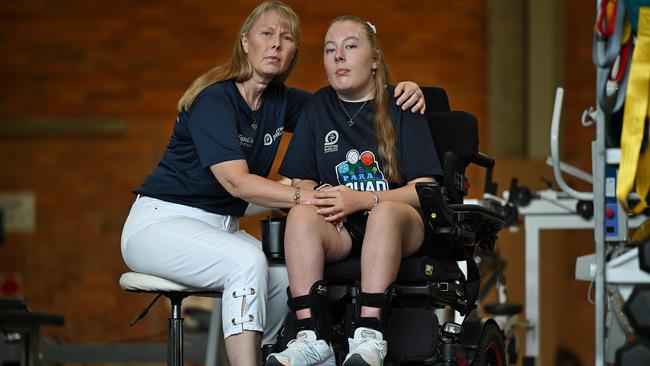Put disabled in control to reduce the NDIS burden

Few examples illustrate this better than the fiscally unsustainable National Disability Insurance Scheme.
Originally established for the noble goal of supporting Australians with significant disabilities, the NDIS was intended to be financially self-sustaining.
The idea was that, over time, it would pay for itself by improving access to education, employment and social participation, ultimately reducing long-term reliance on welfare and healthcare services.
But it has been plagued by soaring costs and systemic inefficiencies, raising serious concerns about its integrity and impact on government finances while jeopardising public support.
The NDIS is the third-largest commonwealth program with costs growing faster than tax revenue and GDP.
In 2019, it cost taxpayers $13bn. By 2028, it is projected to cost $60bn, a compound annual growth rate of 17 per cent.
On its current trajectory, the NDIS will eat the budget.
Following legislative changes in October 2024, the growth rate is expected to temper but it will continue to grow faster than tax revenue and GDP. It is still projected to cost $44.3bn this year, a 10 per cent increase.
Renowned American investor Charlie Munger once said: “Show me the incentive, and I’ll show you the outcome.”

With the NDIS, the incentives drive over-diagnosis, over-servicing, inflated charges and fraud, resulting in unchecked spending.
Uncompetitive pricing for participants abounds, with significant premia charged above that for non-NDIS customers. Standard is the practice of support workers charging top rates to perform rudimentary tasks such as laundry folding, travel and cleaning.
The Facebook marketplace has many NDIS registered service shell companies for sale, with no customers, for sums in excess of $50,000.
NDIS integrity chief John Dardo told a Senate committee hearing that funding intended for packages to support people with permanent and significant disabilities was instead being used to fund criminal activities and purchase cars and holidays. He added that nine out of 10 plan managers surveyed showed signs of fraud but to pursue prosecutions would overwhelm the court system.
A former Australian Criminal Intelligence Commission CEO estimated 15-20 per cent of NDIS funds were misused.
Recently sworn in NDIS Minister Amanda Rishworth declared that “there are 5.5 million Australians with disability”; 20 per cent of the population. Notwithstanding, there are 680,000 NDIS participants, of whom over half are connected to mental health conditions where diagnoses rely on subjective measures.
In numbers that should further terrify government financial planners, 52 per cent of participants are under the age of 18 and 43 per cent are under 14.

Such large numbers of disabled and the disproportionate rates of youth disability should warrant a royal commission.
A lack of independent medical assessment incentivises forum shopping to find the GP, specialist, psychologist or therapist who will support eligibility.
Not only does this clog up the health system, but it also generates indirect costs.
Social media recounts tales of health practitioners being subjected to regulator complaints for failing to diagnose NDIS-eligible conditions.
The macroeconomic costs are significant. Because of the increasing volumes of labour migrating to the “care economy”, attracted by the higher wages, Australia’s productivity is receding and it contributes to overall general economic slowing and malaise. This despite former NDIS minister Bill Shorten’s view the NDIS is the economy’s “unsung hero” for employing more people than the mining industry, the industry that generates billions in taxes and export revenues.
The NDIS has some unusual design features whereby recipients can disregard instructions and correspondence from the NDIS as long as they stay on their current plan. Non-citizens are eligible and benefits are not means-tested.
Beyond the taxpayer, who bears the burden of ever-growing demands, the true victims of fraud and overservicing are the genuinely disabled.
Vulnerable participants have become magnets for predators seeking to access the rivers of taxpayer-financed gold.
Apart from addressing eligibility issues and significantly higher penalties for fraud, a scheme design change to assign each participant a fixed budget sum may be warranted, with the participant or their carer monitoring spending.
Recipients would choose their own programs; currently recipients receive very little benefit from their support packages, which are eroded by the NDIS griftocracy.
Self-determination would take power away from the plan managers who are the source of much of the problem.
With commonwealth gross debt accelerating towards $1 trillion and significant budget deficits for the foreseeable future, a higher integrity, more rigorous scheme is urgently required.
Putting the recipients and their careers in charge of their own care could save significant amounts of taxpayer money while improving the lives of the genuinely disabled.
Peter Swan is professor of finance at the UNSW-Sydney Business School. Dimitri Burshtein is a principal at Eminence Advisory.



In The Wealth of Nations, Scottish economist Adam Smith observed: “There is no art which one government sooner learns of another than that of draining money from the pockets of the people.”